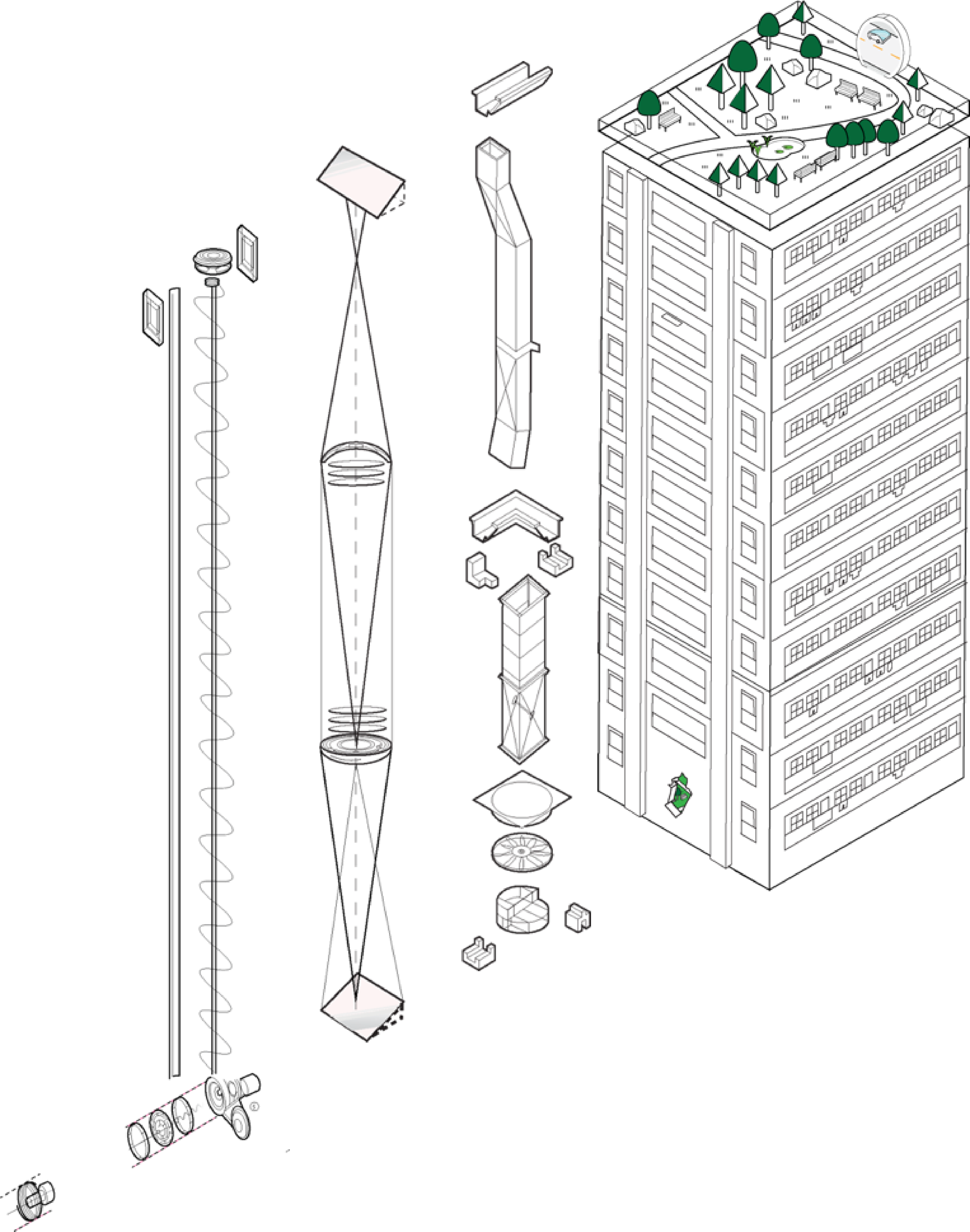Exhibited: La-Salle College of Arts, 2017
Presented at Agile Ageing Alliance Conference 2018 Published in Neighbourhoods of the Future 2019 White Paper
Presented at Agile Ageing Alliance Conference 2018 Published in Neighbourhoods of the Future 2019 White Paper
Completed as a team of 8 over a 3-week intensive design project in Singapore; with collaboration from La Salle College of Arts and Nanyang Technological University.
In collaboration with Benton Ching, Flora Weil, Kevin Rouff, Melissa Ho, Koh Wan Xin, Zhi Liang Chen, Jason Fok.
In collaboration with Benton Ching, Flora Weil, Kevin Rouff, Melissa Ho, Koh Wan Xin, Zhi Liang Chen, Jason Fok.

Urban living necessitates dense living. And often in high-rises. This can lead to isolation within the building, which can be difficult for anybody of any age, especially those of older generations.
Singapore also plans on being 50% green when viewed from above as part of their Lush2.0 initiative, meaning that old green spaces are simply moving up.
Singapore also plans on being 50% green when viewed from above as part of their Lush2.0 initiative, meaning that old green spaces are simply moving up.
Furthermore, Singapore plans to develop zones by which essential amenities, including city-wide transport, will be available within 10 minutes.
After conducting some field research we found that many of the new rooftop gardens are unused and seemed inaccesible to the people interviewed. We realised that this was due to three main issues:
After conducting some field research we found that many of the new rooftop gardens are unused and seemed inaccesible to the people interviewed. We realised that this was due to three main issues:

Lack of signals encouraging upwards movement: there were no signs directing people to go upwards. People don’t assume they can just travel upwards and find a rooftop garden.
Ambiguity of public vs private: People assume the bottom two floors of buildings to be publicly accessible while anything above is seen as private.
Horizontal Bias: People perceive vertical distances as much larger than horizontal distances.


The periscope was the perfect symbol for incentivising the exploration of landscapes that are above us – we therefore developed the architectural scale: CityScope.
We then built 10 periscopes in a week and exhibited our work in La Salle College of Art Singapore.
CityScope was also exhibited and presented at the Neighbourhoods of the Future Conference in 2018 and published in Neighbourhoods of the Future White Paper 2018.



